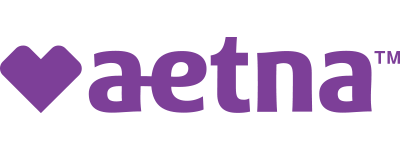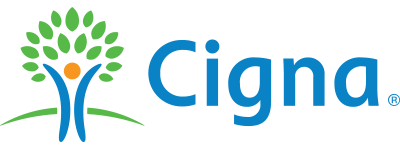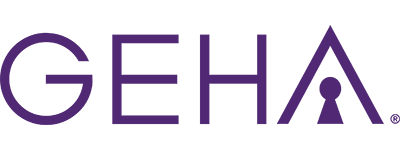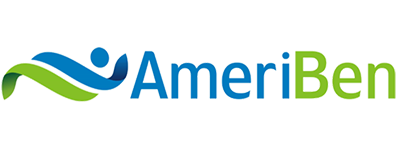Would you know how to identify oxycodone if you saw a pill sitting on your counter?
In an ideal world, all prescription medications would be stored properly in a labeled bottle. However, medications get misplaced all the time, contributing to medication errors, which affect millions of people every year.
Prescription opioids like oxycodone are especially crucial to identify, as ingesting too much or mixing them with other substances can lead to adverse effects and overdose. So far in 2024, there have been 5,534 emergency and inpatient visits involving suspected opioid overdoses in Arizona. Without intervention, oxycodone overdose can lead to brain damage and death.
Wolf Creek Recovery is committed to providing relevant and up-to-date information on substance use, including opioids like oxycodone. Knowing how to identify oxycodone can prevent unintentional harm, plus allow you to recognize the signs that someone in your household may be experiencing opioid use disorder. Let’s explore the ways that you can make a positive oxycodone identification.
What You Should Know About Oxycodone
Oxycodone is a powerful opioid medication commonly prescribed to manage moderate to severe pain, particularly after surgery, injury, or in the case of chronic pain conditions like fibromyalgia. It is similar to other opioids, such as morphine and hydrocodone, and works by altering the way the brain and nervous system respond to pain.
While effective for pain relief, oxycodone carries significant risks, including dependence, tolerance, and overdose. This medication should always be used with caution and taken exactly as directed. However, it’s important to know that dependence can still happen even if you take this medication for legitimate reasons.
The Importance of Identifying Oxycodone Pills
Identifying oxycodone pills is crucial for several reasons, including ensuring proper dosage, avoiding counterfeit substances, preventing misuse, and promoting overall safety. Oxycodone is a potent substance, and taking the wrong dosage or an unverified pill can lead to serious health risks, including overdose and death.
- Ensuring correct dosage. Oxycodone comes in different strengths and formulations, including immediate-release and extended-release pills. The dosage can range from 5 mg to 80 mg. Proper identification ensures that individuals take the correct dosage, preventing overdose or under-medication.
- Avoiding counterfeit pills. The opioid crisis has led to a surge in counterfeit oxycodone pills. These fake pills can contain dangerous substances like fentanyl, which is far more potent than oxycodone and can cause overdose in very small amounts. Proper pill identification helps avoid taking potentially lethal substances.
- Preventing misuse. Identifying oxycodone pills ensures that someone doesn’t accidentally take the wrong medication, particularly in homes where multiple people may be prescribed medication.
- Medication safety. Oxycodone pills can look similar to other medications, and confusing them with non-opioid pain relievers or other medications can lead to unintended consequences. Identifying the pill before taking it helps ensure the right medication is used.
What Oxycodone Looks Like
Oxycodone pills come in various shapes, sizes, and colors depending on the brand, formulation, and dosage. The appearance of oxycodone can vary based on whether it’s an immediate-release (IR) or extended-release (ER) formulation, as well as if it’s generic or brand-name. Oxycodone is also available in combination with other medications, such as acetaminophen, which can affect the appearance of the pill.
Immediate-release versions of oxycodone are typically small and round and made in various colors depending on their strength, including white, yellow, light green, pink, light peach, or blue. The imprints indicate the dosage and manufacturer. Extended-release oxycodone pills are round and imprinted with identifying numbers and letters. Depending on their dosage, they can be white, gray, pink, brown, yellow, red, or green.
Oxycodone can also be combined with acetaminophen to enhance pain relief. These pills are small and round or oblong, often imprinted with the strength and manufacturer. They are available in white, peach, yellow, or light orange.
What Happens When Oxycodone Is Mixed With Other Drugs?
When oxycodone is mixed with other substances, it can lead to dangerous and potentially life-threatening interactions. Because oxycodone is an opioid, it depresses the nervous system and slows down functions like breathing, heart rate, and mental alertness. Combining it with other depressants can greatly enhance these effects, increasing the risk of overdose, respiratory failure, or death.
One of the most dangerous interactions is oxycodone and alcohol. Both substances are depressants, and when taken together, their effects are amplified. This greatly increases the risk of respiratory depression, where breathing becomes slow or stops altogether. Other depressant medications to avoid mixing with oxycodone are benzodiazepines, sleep medications, antihistamines, muscle relaxants, and other opioids like hydrocodone.
Mixing oxycodone with antidepressants can increase the risk of serotonin syndrome, a potentially life-threatening condition where there is too much serotonin in the brain. Symptoms include confusion, agitation, high blood pressure, and rapid heart rate. Stimulants have the opposite effect of oxycodone, increasing heart rate and blood pressure. Mixing the two can put extreme strain on the heart and body, leading to unpredictable effects.
Slang Terms for Oxycodone
There are many slang terms that are used by individuals who misuse or sell oxycodone, including counterfeit pills. Here are some of the most common slang words for oxycodone:
- 20s/40s/80s
- Beans
- Blues
- Buttons
- Cotton
- Hillbilly heroin
- Kickers
- Killers
- Oxy
- Perks
- Roxy
- Roxy shorts
- Whites
What to Do if You Find Oxycodone
If you find oxycodone, whether in your home, workplace, or somewhere else, it’s important to handle the situation with care. Identify who the medication belongs to by checking the label for information about the prescribed person, the dosage, and the prescribing doctor. For loose oxycodone that is not in a labeled container, use an online pill identifier to confirm the dosage and formulation.
What if the oxycodone belongs to someone in your household? Check to see if it’s a valid prescription. If you suspect that the medication is being misused, it could be a sign of opioid use disorder. If you don’t know who the prescription belongs to, you can take the next steps to dispose of the medication properly. There are take-back programs in Arizona, as well as disposal kits and instructions for flushing the medication.
Oxycodone Rehab and Treatment in Prescott, AZ
Oxycodone rehab and treatment is essential for individuals experiencing dependence, whether it’s due to prescription misuse or recreational use. As a potent opioid, the prolonged use of oxycodone can lead to serious health issues, including overdose. Fortunately, there are various treatment options available to help individuals recover, including detoxification, medication-assisted treatment, counseling, therapy, and peer support.
Medical detoxification is usually the first step in treating oxycodone dependence. The goal of detox is to safely remove the substance from the person’s system while managing withdrawal symptoms. Medication-assisted treatment is also a highly effective approach, and it involves using FDA-approved medications to help reduce cravings and withdrawal symptoms. Most physical symptoms of oxycodone withdrawal taper off in about a week, though psychological symptoms can last longer.
To address the psychological components of oxycodone misuse, individuals should participate in counseling and behavioral therapies, such as cognitive behavioral therapy, peer support groups, and family counseling. It’s also important to build healthy habits, change attitudes and behaviors related to substance use, and to take medications appropriately. To ensure you receive comprehensive care, it’s best to choose a residential or intensive outpatient program that provides a wide range of therapies.
If you or a loved one is experiencing oxycodone dependence, Wolf Creek Recovery is here to help. We offer Phase One and Phase Two treatment, along with Extended Care. Our caring staff is also in recovery, giving you the biggest support system right from the start. Aside from daily individual and group therapy sessions, we also offer outdoor therapy that includes fun activities like basketball, pickleball, and disc golf. Build a life you love. Contact Wolf Creek Recovery at 833-732-8202 to learn more about our programs.
FAQs About Oxycodone Identification
How can I figure out if a pill is oxycodone?
The best way to determine if a pill is oxycodone is by using an online pill identifier. You can find these online or on mobile apps. Legitimate oxycodone pills are usually small and either round or oblong, with imprints indicating their dosage and manufacturer. They also come in various colors, such as white, yellow, peach, or light pink.
What should I do if I find a loose oxycodone pill?
If you find a loose pill that you believe to be oxycodone, it’s best to discard it properly. Most states have drug take-back programs, allowing you to drop off the medication for safe disposal.
Can I flush oxycodone down the toilet?
Yes, you can flush oxycodone down the toilet, as it’s on the FDA’s “flush list.”











